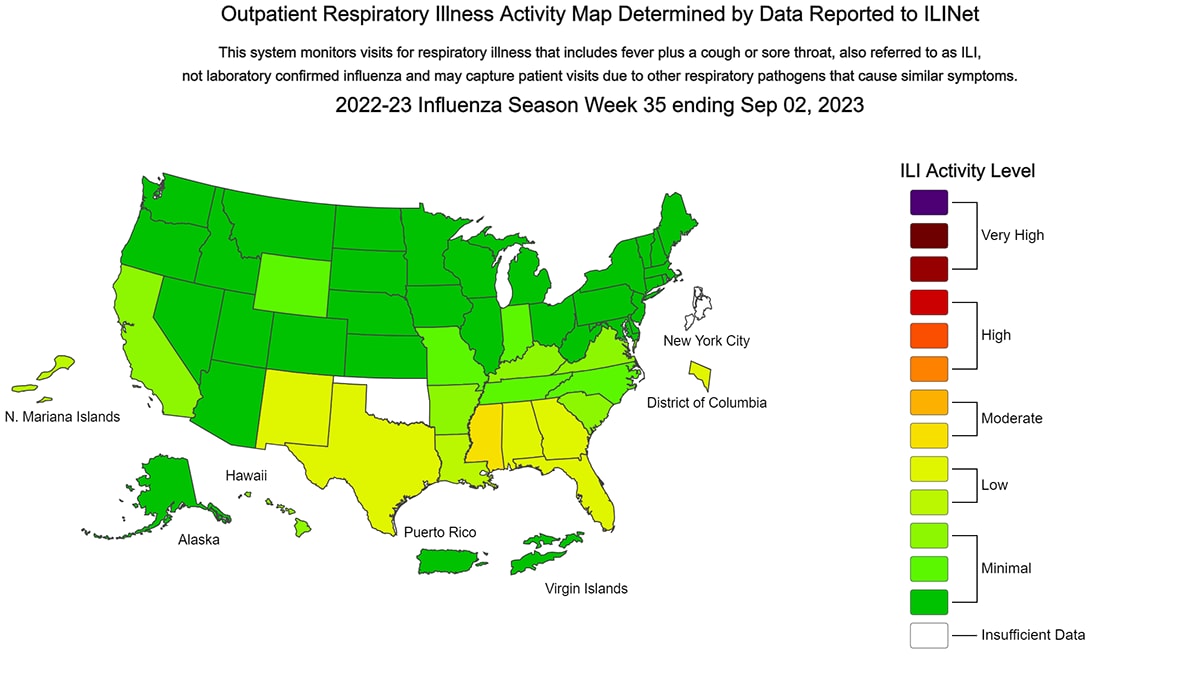Key points
- Activity for respiratory viruses like the flu is currently low across most of the United States.
- CDC expects flu activity in the United States to increase in the coming weeks.
- The U.S. 2023-2024 flu vaccines have a similar vaccine virus composition as the 2023 Southern Hemisphere flu vaccines.
Summary
What CDC knows
The U.S. 2023-2024 flu vaccines have a similar vaccine virus composition as the 2023 Southern Hemisphere flu vaccines.
What CDC is doing
A new CDC study found that people who had received a flu vaccine were half as likely to be hospitalized with flu compared to people who had not been vaccinated.
Activity for respiratory viruses
Activity for respiratory viruses like the flu is currently low across most of the United States.

Deaths, hospitalizations, and illnesses
The level of flu activity can vary from year to year. In past years, the flu has caused millions of people in the United States to get sick, with hundreds of thousands of hospitalizations and tens of thousands of deaths.

CDC expects flu activity in the United States to increase in the coming weeks. Flu in the Northern Hemisphere is often caused by viruses similar to those that spread in the Southern Hemisphere during their winter flu season.
This year's Southern Hemisphere flu season
This year's Southern Hemisphere flu season had an earlier peak during April to May, compared to typical peaks in June to July. Of the specimens that tested positive for Influenza, approximately 90% of the viruses were Influenza Type A and 10% were Influenza Type B. What happens in the Southern Hemisphere does not necessarily predict what will happen in the Northern Hemisphere. This is because different flu viruses may spread more commonly in different parts of the world and immunity may vary between populations.

The U.S. 2023-2024 flu vaccines have a similar vaccine virus composition as the 2023 Southern Hemisphere flu vaccines. A new CDC study, which looked at children and adults in five South American countries during the 2023 winter flu season (our summertime), shows flu vaccine performed well against those viruses. This study found that people who had received a flu vaccine were half as likely to be hospitalized with flu compared to people who had not been vaccinated. This finding shows that flu vaccine provides protection against serious outcomes.
This season's U.S. flu vaccines could provide similar benefit against serious flu outcomes during the upcoming season if the same viruses continue to spread here.
Last flu season started early in the U.S., with activity increasing nationally at the beginning of October 2022 and peaking in early-December 2022, causing an estimated 27 million illnesses and 300,000 hospitalizations. To prepare for this flu season, Americans should begin getting vaccinated against flu, and ideally, be vaccinated before the end of October. Check vaccines.gov to find a flu vaccine near you.
Learn more about flu in the Southern Hemisphere.
